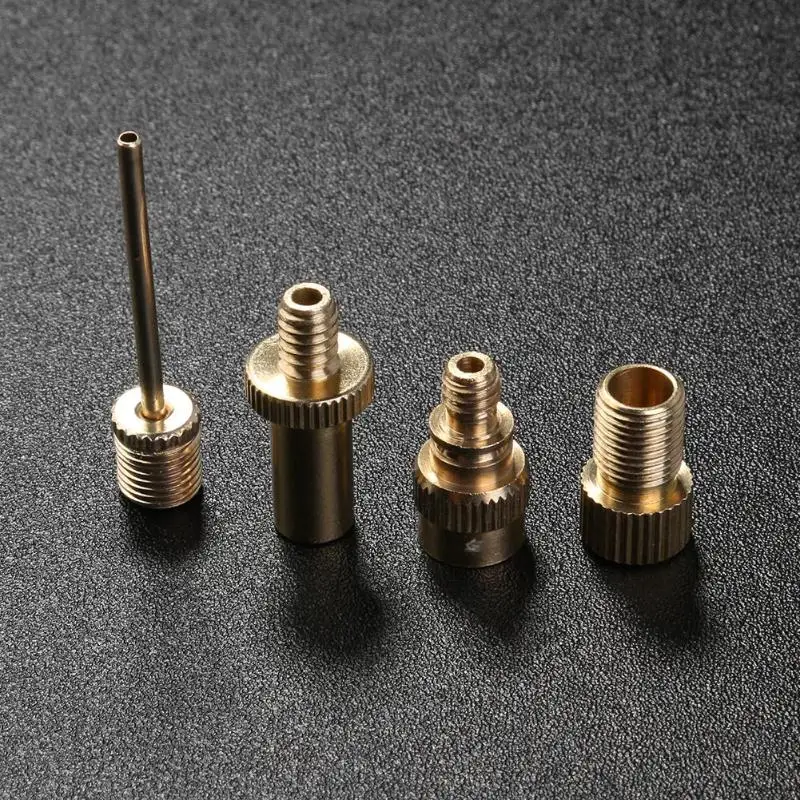It is actually a simple and painless task to inflate bicycle tires, as long as you have the right tools. You simply have to identify the type of valve you are using, follow the tips below, and pump accordingly.
A Schrader valve is also known as American valve or car valve. The valve stem is surrounded by a threaded valve core. In order to press down on the stem, you have to use a tool like a cap of a pen or just your thumbnail. Typically, Schrader valves are wider in diameter and shorter than Presta or French valves. They are usually used in cars, less expensive motor bikes and bicycles.
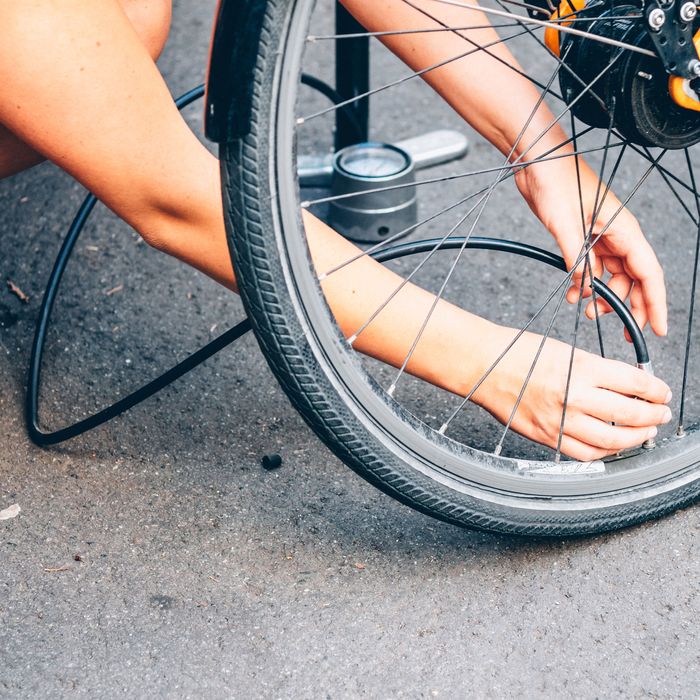
Note: To deflate a tire with a Schrader valve, just press on the springy valve stem with your fingernail or other small tool until all air escapes.
To be spared from hassles caused by punctured tires, consider getting a bicycle with slimed tubes with self-repairing flat prevention system. Visit Zize Bikes, the maker of extra strong custom built bicycles for every body, including bicycles for heavy riders that can support riders up to 550 pounds.
❚ The products mentioned in this article are selected or reviewed independently by our journalists. When you buy through links on our site we may earn an affiliate commission, but this never influences our opinion.
It might be a basic thing, but being able to pump up your bike’s tyres is an essential skill for any cyclist.
A lot of you will already know how to do this, but for those who don’t, the different valve types, pumps and, more importantly, what pressure to pump your tyre can be a bit overwhelming. Let us guide you through the process.
Pneumatic tyres were invented to get over the bone-jarring ‘ride-quality’ of solid wheels.
The air inside acts as a spring, providing suspension for you and allowing the tyre to conform to the terrain providing better traction and grip.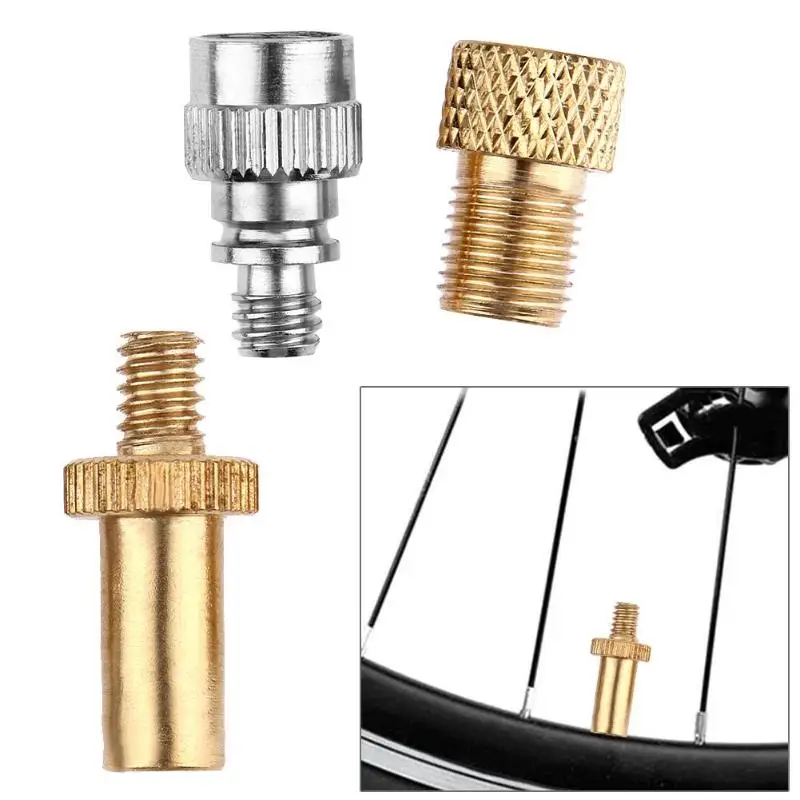
Pumping up your tyres is a quick job that can easily improve your enjoyment while riding. Running the wrong tyre pressure will negatively affect the way that your bike rides and can also make your bike more prone to punctures.
If you’ve never repaired a puncture before, you might not have considered how your tyres hold air inside.
The vast majority of bikes will use an inner tube. This is a doughnut shaped airtight tube that sits inside the tyre, with a valve for pumping it up that you see on the outside.
The tyre, when inflated by the tube, is what grips the ground and provides protection from punctures.
You may have heard of tubeless tyres, which forgo a tube and use a special rim and tyre to seal air without the need for a tube. These usually require tubeless sealant inside, which is a liquid that plugs any points where air is escaping.
Tubeless tyres are more commonly found in mountain biking, but the technology is migrating to road bikes.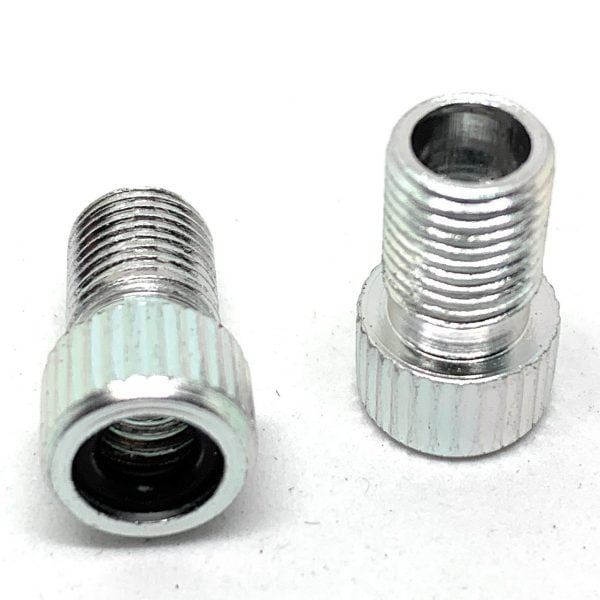
The tubeless sealant also plugs punctures, and no tube means a much lower risk of pinch flats – that’s when your inner tube is pinched by the rim, causing a puncture. Tubeless tyres can, therefore, be run at lower pressures than those with an inner tube setup, for improved comfort, speed and traction.
At the very high end, you also get tubular tyres. This is essentially a tyre with the tube sewn into it, but they are rarely seen or used outside of professional racing.
Inflating your tyres to the correct pressure is an essential part of bike maintenance.Oli Woodman / Immediate Media
Running your tyres at either too high or too low a pressure can be potentially dangerous, as well as negatively impact the handling of your bike.
We’ll discuss later what the correct pressure is, but for the moment let’s look at possible problems.
An under-inflated tyre will rob your efficiency and leave you susceptible to annoying punctures. Oli Woodman / Immediate Media
Oli Woodman / Immediate Media
If you run your tyres at too low a pressure, the tyre can wear prematurely. Excessive flexing in the sidewall can lead to the casing cracking and the tyre becoming fragile. This could eventually lead to a blowout.
Excessively low pressures also increase your susceptibility to punctures and may even result in your tyres literally rolling off the rim if you corner at speed (the pressure inside is what holds your tyre on the rim).
Damage can also be caused if the tyre deflects all the way down to the rim. This can result in dents or cracking, potentially compromising your wheel and resulting in an expensive replacement.
Conversely, running too high a pressure could result in your tyre blowing off the rim with explosive consequences. That pressure can also squeeze the wheel because if it’s too high the compressive force on the wheel can be too high.
In terms of handling, a low pressure can result in compromised handling with the tyre squirming under load.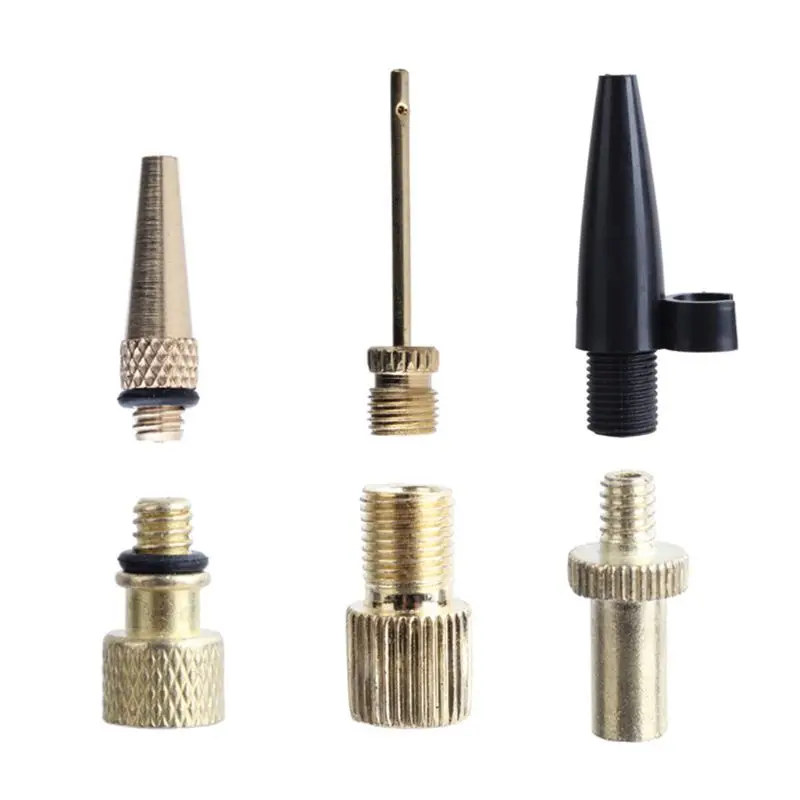 Your bike will feel difficult to control, slow and sluggish.
Your bike will feel difficult to control, slow and sluggish.
On the other hand, too high pressure can result in reduced grip and a harsh ride, leading to fatigue and in turn impacting handling.
There are two likely reasons why your tyre is flat. Either you have a puncture or your tyre has just deflated over time.
If you have a puncture, we’ve put together a comprehensive guide on how to fix a puncture.
Glueless patches are great for a quick fix, while a more traditional kit is a versatile option when you have a bit more time.
All tyre systems will leak air slowly because tubes aren’t completely airtight. For example, standard butyl tubes hold air fairly well compared to lightweight latex tubes, which leak comparatively quicker. Even tubeless setups will slowly leak air.
Old tubes will leak more air than new ones, so if yours haven’t been replaced in a while they may be worth looking at. Less likely, but also a possibility (especially on older tubes), is that the valve is no longer sealing properly.
The best way to check what’s going on is to try pumping up the tyre. If it holds air then there’s likely nothing more you need to do. If it doesn’t, then you likely have a puncture.
If it leaks air slowly overnight, either you have a slow puncture or simply an old tube that needs replacing.
The first thing you’ll need to know before pumping up your tyre is what valve type is fitted.
The valve is the key part that keeps air in the tyre, but also lets you inflate (or deflate) the tyre.
The Schrader valve is also used for car tyres.Oli Woodman / Immediate Media
Schrader valves are more common on lower-end bikes and, in the past, mountain bikes. The same valves are used on car tyres.
The valve assembly is a hollow tube with a sprung valve that closes automatically and screws into the external body. A pin extends up from the valve and is usually flush with the end of the outer tube.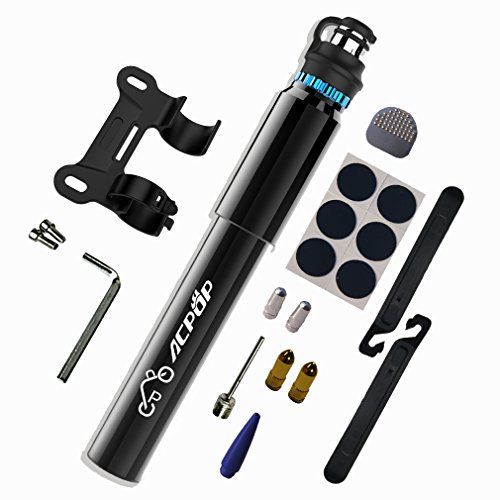 This pin can be depressed to let air out.
This pin can be depressed to let air out.
The dust cap on Schrader valves is an important part of the design that can help fully seal the valve if it is not completely air-tight. It essentially provides a secondary ‘backup’ seal.
The sprung design of the valve is a little susceptible to contamination from dirt or grit so it’s important to protect it too.
Presta valves such as this one are longer and narrower than the Schrader type valve.Oli Woodman / Immediate Media
You will only find Presta valves on bicycles.
They originated on road bikes where the narrower valve (6mm vs 8mm for a Schrader) meant a smaller valve hole (typically the weakest part of a rim) on narrow road wheels.
Nowadays they are seen on both mountain bikes and road bikes. Rather than use a spring, the valve is secured with a nut that holds it closed, though the valve itself is sealed ‘automatically’ when pressure inside the tyre pushes it shut.
With a Schrader valve, you can simply press the pin to release air, but with a Presta valve you first have to unscrew the little locknut.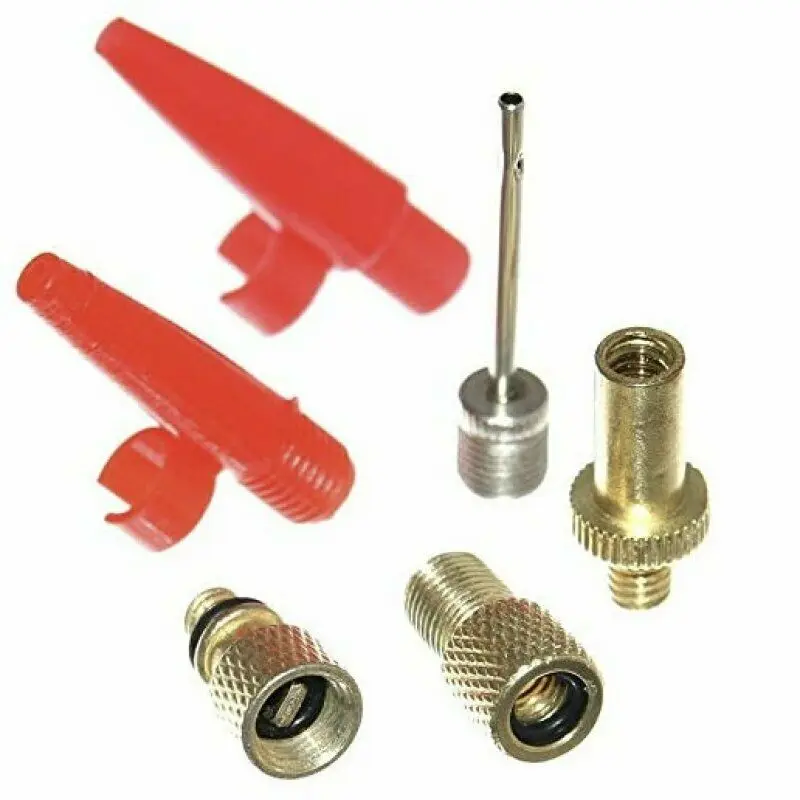 Don’t worry about the nut coming off the end of the valve body because the threads are peened to stop that happening.
Don’t worry about the nut coming off the end of the valve body because the threads are peened to stop that happening.
There seems to be a myth that Presta valves deal with high pressures better – this probably isn’t true considering there are Schrader valves that can withstand many hundreds of psi (way more than you’ll ever need in your tyre).
Presta valves are definitely a little more delicate than Schrader valves, though. It’s quite easy to knock the threaded internal valve body and bend or break it, so a bit more care needs to be taken. However, valve cores are easily replaceable with standard tools.
In comparison, on Schrader valves, this requires a proprietary tool.
Presta valves may come with a lockring that secures the valve body against the rim. This can make them a little easier to inflate. The dust cap is not essential to seal it, but helps keep the valve clean.
The only other type of valve you may come across is a Dunlop (also known as Woods) valve.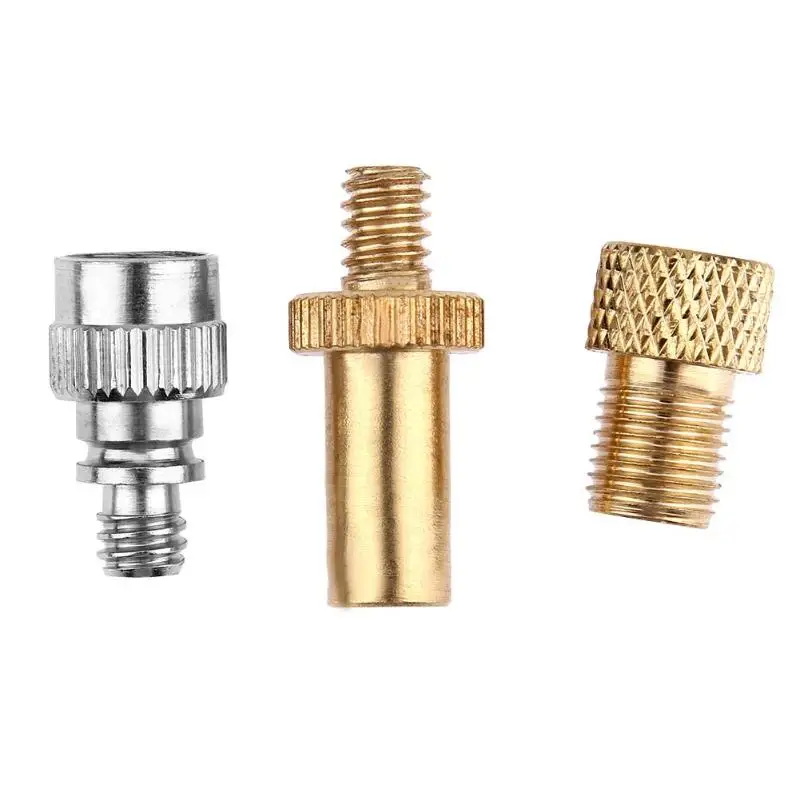 This has a similar base diameter to a Schrader valve, but can be inflated with the same pump fitting as a Presta valve.
This has a similar base diameter to a Schrader valve, but can be inflated with the same pump fitting as a Presta valve.
These are very popular on town/upright bikes in Europe and elsewhere in the world, but you’re very unlikely to come across one in the UK or in the US.
A tubeless valve can be difficult to distinguish from a regular Presta valve.Oli Woodman / Immediate Media
Valves for tubeless setups are attached directly to the rim, rather than being part of an inner tube.
More often than not, they are Presta-type, but Schrader ones do exist.
Oli Woodman / Immediate Media
If you’ve got a Schrader type valve, such as the one shown above, then the first thing you need to do is remove the dust cap (if there is one in place).
Oli Woodman / Immediate Media
Simply unscrew the cap anticlockwise to reveal the valve.
Oli Woodman / Immediate Media
Now attach the head of your pump.
Oli Woodman / Immediate Media
Inflate the tyre to a value between the minimum and maximum stated on the tyre sidewall and remove the pump. You’re done!
Oli Woodman / Immediate Media
If your bicycle has a Presta type valve such as this one then you will first have to remove the plastic valve cap (if fitted).
Oli Woodman / Immediate Media
The plastic cap will reveal another threaded cap to the valve.
Oli Woodman / Immediate Media
Unscrew the thread but be careful to not damage it in the process.
Oli Woodman / Immediate Media
Now attach the head of your chosen pump to the open valve and inflate the tyre to a pressure that’s between the minimum and maximum stated on the tyre’s sidewall.
Inflate the tyre to the desired pressure and remove the pump.
Oli Woodman / Immediate Media
Finally, close the valve by screwing it clockwise and reinstall the plastic valve cap.
If you have a tubeless setup, or tubes setup with sealant inside, then it’s worth taking a few extra steps to avoid gunking up your pump.
Turn the wheels so the valves are at the bottom and leave for a few minutes so any sealant can drain out.
Turn the wheels so the valves are at the top and pump up your tyres. The same goes when deflating tyres to prevent goop spraying everywhere.
We’d say that, if you can only own just one type of pump, get a track pump for home use because it’s efficient, quick and easy to use.
However, there’s no doubt that having an additional mini-pump for when you’re out on the road is rather useful – otherwise you risk being stranded at the roadside in the event of getting a puncture.
We’ve already got a guide on choosing the best bike pump for your needs, but here a few recommendations for you to consider.
The sky’s the limit with track pumps. They basically all do the same job, some with a more premium feel than others.
From a budget Park Tool PFP8 to the absurdly expensive Silca Pista Plus, you’ll be able to find something that suits your needs.
Mini pumps work but are a lot more frustrating to use. Again, there are lots of options available from mini track-style pumps to tiny pumps that will fit in a jersey pocket. We tend to prefer mini pumps with a hose because that reduces stress (and potential damage) on the valve.
Two of our favourites have been the Truflo TIO Road and the Lezyne Micro Floor Drive HP.
One other possibility for your inflation needs is a CO2 inflator. These use compressed carbon dioxide in a small cartridge to inflate or top up a tyre really quickly. Not something you would want to use on a regular basis, but perfect for an emergency repair.
The first thing to do is to attach your pump to the valve.
Remove the valve cap, and regardless of valve type, we find it’s good to release just a little hiss of air to ensure the valve isn’t stuck and opens and closes cleanly. Either thread-on the chuck or push it on and lock it.
If your tyre is completely flat it may initially be a bit of a struggle to fit the chuck because the valve has a tendency to push back into the rim. Simply hold the valve from behind by pushing on the outside of the tyre so that you can lock the chuck on properly.
The lockring on Presta valves (if fitted) can also help, preventing the valve from disappearing by holding it in place for you.
The connection to the valve should be air-tight. A little escaping air is normal when attaching the pump, but shouldn’t continue for long. If it does, remove and reattach the chuck. If it continues to be a problem it may be worth checking the rubber seal in the chuck to see if it is worn out and needs replacing.
Remember to be gentle with the valves – they’re delicate.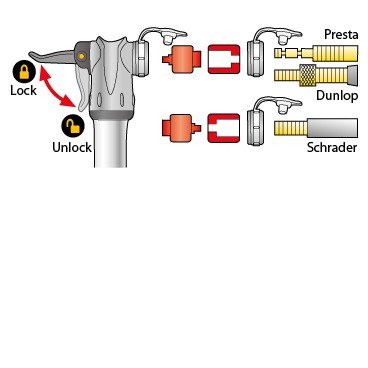 That’s especially the case if you’re using a mini pump without a hose.
That’s especially the case if you’re using a mini pump without a hose.
Make sure to brace the pump with your hand wrapped around the spokes or tyre to avoid transferring too much of the pumping force to the valve, which could lead to damage.
When you start pumping make sure to use the full stroke of the pump. You’ll find that the majority of the stroke is taken up compressing the air to the point where it will then be pushed into the tyre.
If you don’t use the whole length of the pump, the air won’t be pushed out of the bottom – you need to generate overpressure in order to move the air from the pump to the tyre. Instead, you’ll just end up with the shaft bobbing around doing nothing.
With a track pump, don’t just use your arms, use your body weight for the downstroke and pumping will become a lot easier.
You may sometimes find that the pump doesn’t seem to hold pressure, especially when inflating the tyre from completely flat. This may especially be the case with an older pump where seals may be slightly sticky.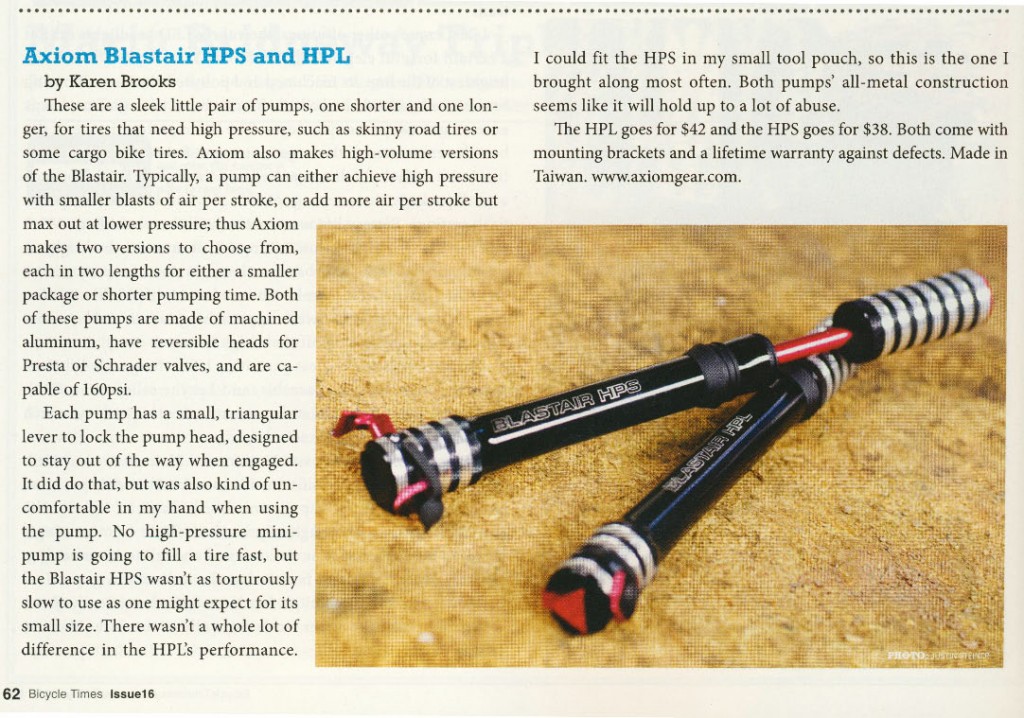
We find it helps to pump vigorously initially, to generate enough back-pressure (i.e. pushing back from the tyre side) in the system to ensure that valves are actuated properly and seal up, in turn inflating the tyre. Keep on going until you get the right pressure.
When removing the chuck from the valve there is usually an audible hiss of air being lost. This is usually from the pump rather than the valve side. Pressured air in the hose and chuck is just escaping.
A pump gets the air in your tyre. The operating principle is simple; you increase the pressure inside the pump until it exceeds that inside the tyre. This ‘overpressure’ forces air into the tyre, increasing its pressure too.
A pump is just a manually actuated piston. On a pump’s downstroke, a check valve (allows air-flow in one direction) seals the piston chamber, resulting in air being pressurised as the pump is compressed. That pressure increases until it exceeds that inside the tyre.
At this point, a second one-way valve will allow air to flow from the pressurised pump chamber into the tyre. You extend the pump again, the check valve opens to refill the chamber with air and you repeat the process.
To prevent the pressure in the tyre leaking back out, the second check valve at the base of the pump closes. If it wasn’t there, the pump would just shoot open again.
Presta valves will close automatically, but the sprung Schrader valves are usually held open by a pin in the pump valve attachment (this means you don’t need any extra effort when pumping to overcome the pressure exerted by the spring.)
The head of the pump is also known as the chuck.Oliver Woodman / Immediate Media
The chuck is the part that attaches the pump to the valve and forms an airtight seal over the valve. One of two designs exist: threaded or push-on with a locking lever. Most pumps nowadays are also adaptable to either Schrader or Presta valves.
They will either feature two different attachment points or an adjustable chuck that can be changed to suit both types.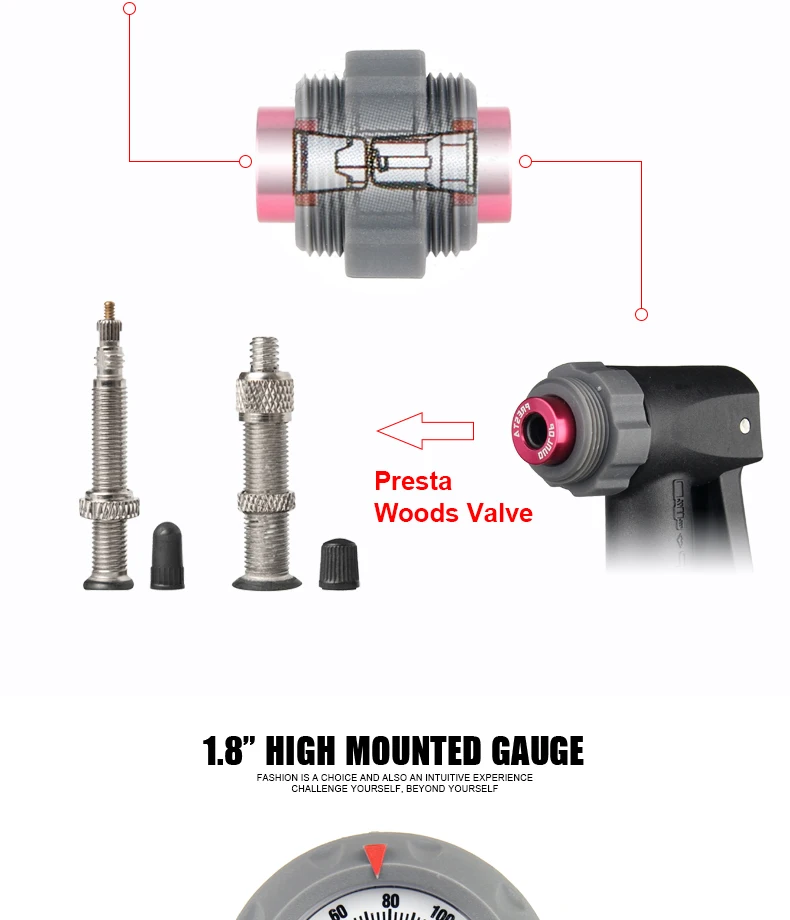
For larger pumps (and many mini-pumps too) the chuck is often on a hose, preventing your pumping force from damaging the valve.
Pumps will often include a pressure gauge to check the pressure inside your tyre.
The right tyre pressure is perhaps one of the most contentious subjects, but there are definitely a few guidelines that you can use.
As a general rule, your tyre should be solid enough to prevent the tyre deflecting all the way to the rim, though compliant enough to provide some suspension – after all, the beauty of a pneumatic tyre is that you don’t have to have a bone-jarringly hard ride.
Most tyres will have a minimum and maximum pressure rating printed on the side. It’s advisable not to go under or over those limits because manufacturers have specified them for a reason. Of course, that means there’s still a lot of room to play with pressure and what works for you.
For mountain bikes the problem is relatively easier, with the usual aim being to improve traction, cornering and shock absorption.
As a general rule, riders try to run as low a pressure as possible without having it so soft that the tyre squirms under cornering load or deflects enough for damage to occur to the rim.
For road bikes it becomes a little more complicated because along with traction and comfort, rolling resistance (how efficiently a tyre rolls) is a major consideration as well.
Contrary to what many assume, the new school of thought seems to suggest that harder is not necessarily faster.
On all but the smoothest of surfaces, a hard tyre will not have as much suspension, and instead of the tyre being able to deflect and conform to irregularities – keeping the bike moving forward – you will get bounced around.
On all but the flattest of surfaces softer tyre pressures can provide more comfort and be more efficient.
A tyre pressure drop chart.Frank Berto (Bicycle Quarterly)
The most comprehensive research into this was underatken by Frank Berto, who put together a tyre pressure inflation chart.
This testing determined that a 20 per cent tyre drop (the amount the tyre compresses when load is applied, measured by the height from the ground to the rim) was the optimum balance.
Incidentally, some manufacturers recommend a similar level of tyre drop, though the figure is open to some debate.
This value does provide a good starting point to experiment with tyre pressures. The chart looks at individual wheel load – i.e. your and your bike’s weight on each wheel (40 per cent front / 60 per cent rear is a good starting point) – and calculates the pressure for each accordingly.
You need not always get your pump/gauge out to check for tyre pressure.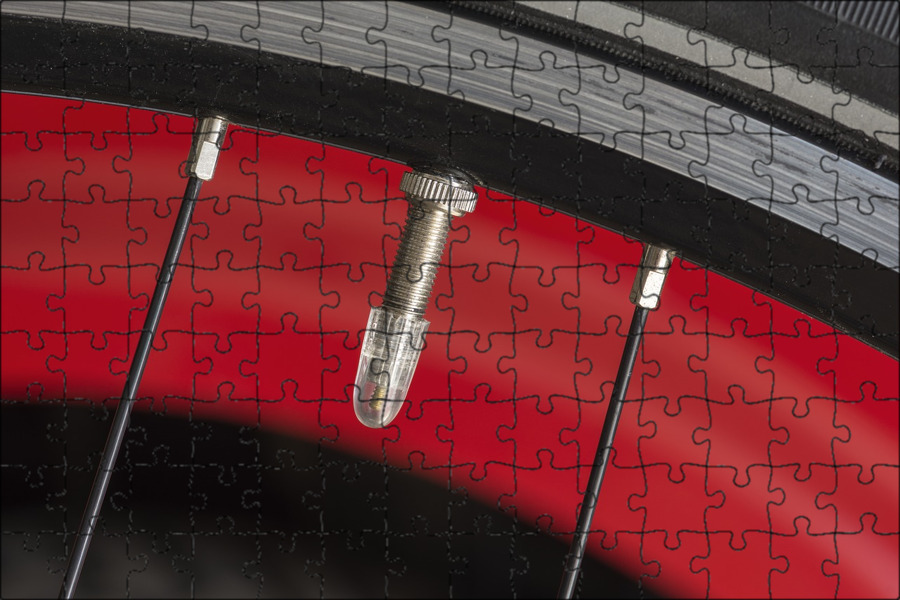 BikeRadar / Immediate Media
BikeRadar / Immediate Media
It’s a good idea to check your tyres before each ride. Usually, that just involves giving them a squeeze by hand to check the pressure.
No, it’s not super accurate, but you’ll quickly get a feel for the pressure in your tyres and be able to tell whether they need pumping up or not.
If you start to get really nerdy about it, you may end up investing in a pressure gauge, which can read the pressures in your tyres very accurately.
That’s especially helpful for mountain bikes where a few psi can make a large difference to handling and grip, but equally applicable on a road bike to find the exact pressure that works for you.
BikeRadar provides the world's best riding advice. We're here to help you get the most out of your time on the bike, whether you're a road rider, mountain biker, gravel rider, cycle commuter or anything in between. You can expect the latest news and features, in-depth reviews from our expert team of testers, impartial buying advice, how-to tips and plenty more.
Hello everyone! In this article, we will tell you how to pump up a wheel on a bicycle. We'll give beginners tips on getting the right tire pressure, talk about different pumps, and cover all the challenges you might run into. Go!
To begin with, let's deal with tire pressure, since a lot depends on it, for example:
Bicycle manufacturers usually list the optimum bead pressure range, which can vary greatly depending on wheel width. For example, for fat bikes, the optimal pressure is from 0.5 to 2 atmospheres, for mountain bikes from 2 to 4 atmospheres. Well, for road models, suitable pressure ranges from 5 to 8 atmospheres.
Based on this, it can be concluded that the minimum pressure is used where it is necessary to ensure good grip on uneven surfaces. Well, the maximum pressure increases the roll on a flat surface. Therefore, we recommend that you inflate the wheels according to how you plan to ride. If you don't have a particular preference, inflate at a medium setting for good rolling and traction.
Well, the maximum pressure increases the roll on a flat surface. Therefore, we recommend that you inflate the wheels according to how you plan to ride. If you don't have a particular preference, inflate at a medium setting for good rolling and traction.
The weight of the cyclist should also be taken into account - if you weigh little, then it is better to choose a pressure closer to the minimum, and vice versa.
There are three standards of nipples used on modern bicycles. This is:
Schroeder is the best known type of nipple, which is also used in cars. Therefore, you will meet him on most bikes.
Presta is a thin nipple often referred to as a French nipple. These nipples are most commonly found on high-end bikes. As for the Dunlop standard nipples, they are very rare.
Some may think that each nipple requires a special pump. But this is not so - it is enough to purchase a regular car pump and an adapter for your type of nipple.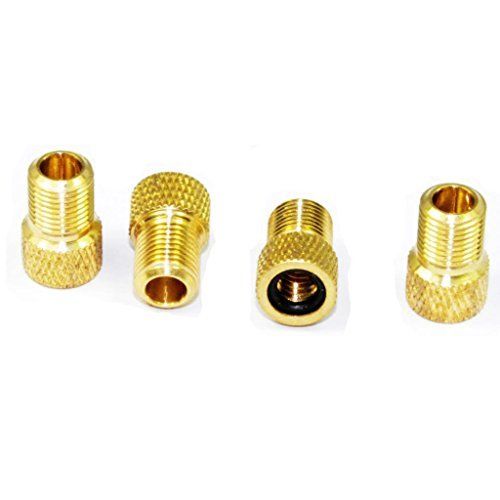
If you don't have a car pump, you can purchase a bicycle pump. Most of the models on sale are universal, and support all nipple standards at once. Bicycle pumps are:
Compact pumps pump the wheels for a long time, but they take up little space. They can be mounted directly on the frame, and always carry with you, which is very convenient.
Floor pumps are more comfortable to use as they blow in more air with one push. In addition, they are equipped with a pressure gauge that allows you to control tire pressure. These pumps are an indispensable tool for road bike owners.
That's all for today. Thank you for your attention, if this article was useful to you, please like us or share it with your friends. See you again.
We believe we have an online store closer to you. Would you instead like to visit: Deutschland No thanks
Our Veloped and Walker rollators are equipped with hoses with automotive valves. To inflate tires, you can use a modern bicycle pump with a car nipple (Schrader valve) or a racing bike valve. You can also visit a gas station to get your tires pumped up. If the tube is defective, you can replace it the same way you replace a tube on a bicycle.
To inflate tires, you can use a modern bicycle pump with a car nipple (Schrader valve) or a racing bike valve. You can also visit a gas station to get your tires pumped up. If the tube is defective, you can replace it the same way you replace a tube on a bicycle.
Would you like more information? Below you will find the most comprehensive information about our Veloped and Walker
rollators.Show all reviews
12 0
Rating:
Outstanding…
although a lot of tour is an expensive investment, it is well worth it. He gave me mobility, providing no rolator. Now I can navigate rough terrain, cobbled streets, curbs and even pot holes with ease. I intend to charge me to Europe…
He gave me mobility, providing no rolator. Now I can navigate rough terrain, cobbled streets, curbs and even pot holes with ease. I intend to charge me to Europe…
Read the full review of
Veloped Tour M 12er (black/reflex/red)
represented by Loeb Granoff
0 0
Rating:
Veloped Trek…
I recently purchased a Veloped Trek and am so happy with it. The advice I got from the company and their service was top notch and the product itself is just superb.
I have multiple sclerosis, so I can hardly walk with a cane or wheel…
Read the full review of
Veloped Trek M 14er (blue/black/yellow)
represented by Keith
9 9
Rating:
Rover…
This rollator is indeed an Rover; it can even be used on hiking trails.…
Veloped Tour M 12er (black/reflex/red)
represented by Monika Strobl
3 1
Grade: 9.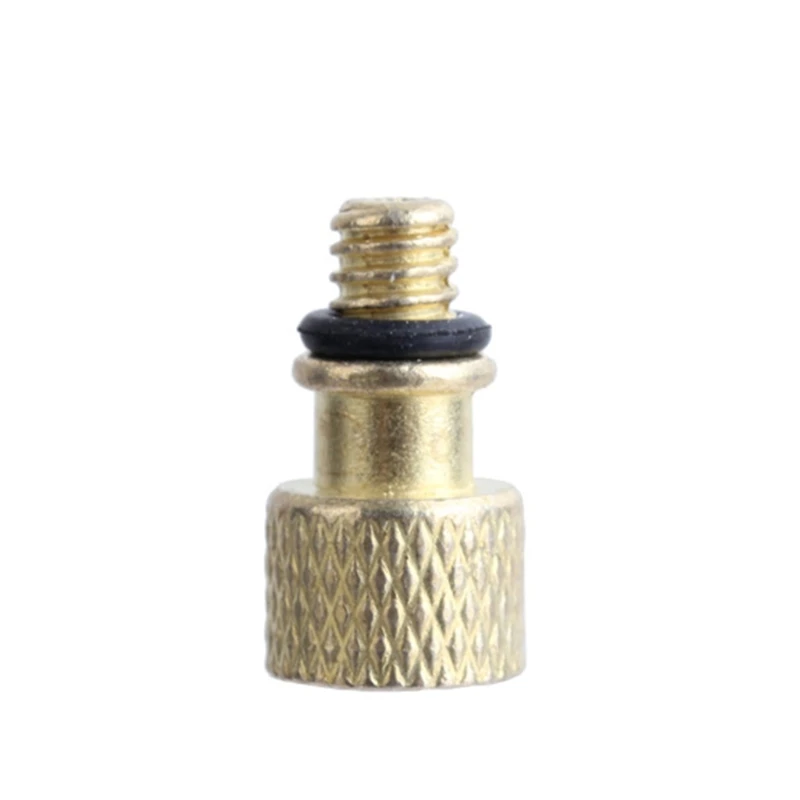 Thanks to this device, I can still walk and have not had to use a wheelchair.…
Thanks to this device, I can still walk and have not had to use a wheelchair.…
Veloped Trek M 12er (blue/black/yellow)
represented by Tina Craine
5 0
Rating:
Trionic Veloped…
Veloped arrived from Sweden within a week, so the delivery time was good.
Before purchasing it, I called the support service and was very pleased with the advice.
I have a lightweight walker for shopping, but I wanted something…
Read the full review of
Veloped Sport M 12er (blue/red/white)
represented by Janet Wilde
2 0
Rating:
Trionic Veloped Trek…
One thing can be said about the Veloped Trek – AMAZING. The design and construction is simply amazing - you have thought of everything. The Veloped Trek has completely changed my life, and even though I recently got it, I can already walk freely in the fields with my dogs –…
Read the full review of
Veloped Trek M 12er (blue/black/yellow)
represented by Anne Spens
2 0
Score:
It’s like I won the lottery!…
Due to my chronic obstructive pulmonary disease (COPD) disease, knee surgery, and balance problems caused by spinal surgery, I could only walk through our large garden, which has no paved roads…
Read the full review of
Veloped Tour M 12er (black/reflex/red)
represented by Helmut Handschuh
13 4
Rating:
We are very satisfied!…
Walker, ideal for cobblestones and very easy to handle! It is more flexible than conventional walkers and offers much more comfort; We are very satisfied!…
Walker 12er (size M/L) blue/black/red
represented by Carina Birgitta Brask
3 1
Rating:
I'm glad I bought such a valuable rollator.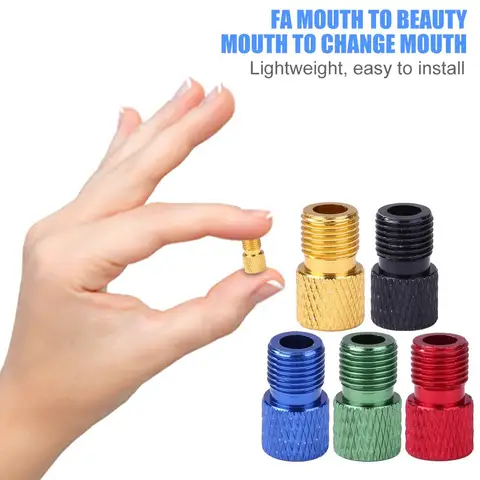 ..
..
Nothing to complain about, I'm completely satisfied with it. At 91, with occasional health complaints, I take a daily brisk walk to boost my body's circulation. (I could not walk fast with a walker, which is paid ...
Read the full review of
Walker 14er (size M/L) black/black/grey
represented by Ancus Martius
Please click on the button to order our free product catalog.
Order your free catalog here
Copyright © 2023 Trionic. All rights reserved Sitemap Powered by LiteCart®
Strictly necessary cookies
These cookies are essential for the website to function and cannot be disabled on our systems. As a rule, they are activated only in response to your actions similar to a request for services, such as setting your privacy level, logging in, or filling out forms.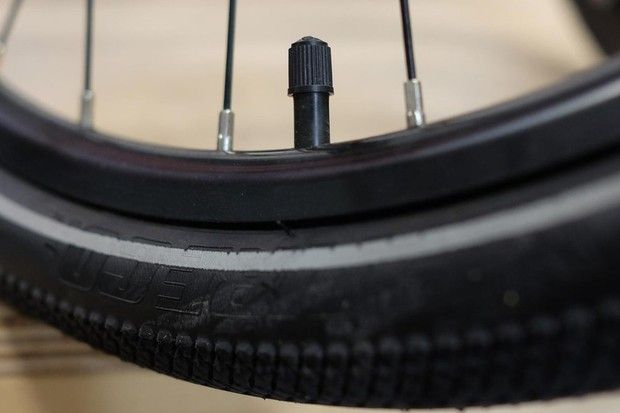 You can set your browser to block these cookies or notify you when they are used, but if you do this, some parts of the website may not work.
You can set your browser to block these cookies or notify you when they are used, but if you do this, some parts of the website may not work.
Functionality cookies
These cookies allow you to provide enhanced functionality and personalization, for example for online chats and videos. They may be customized by us or by third party providers whose services are included on our pages. If you do not accept these cookies, some or all of these features may not work properly.
Performance cookies
These cookies allow us to count the number of visits and traffic sources in order to measure and improve the performance of our website. Thanks to them, we know which pages are the most and least popular and see how visitors navigate the website. All data collected by these cookies is grouped into statistics and is therefore anonymous. If you do not accept these cookies, we will not have any information about your visit to our website.
Targeting Cookies
These cookies are set through our website by our advertising partners.